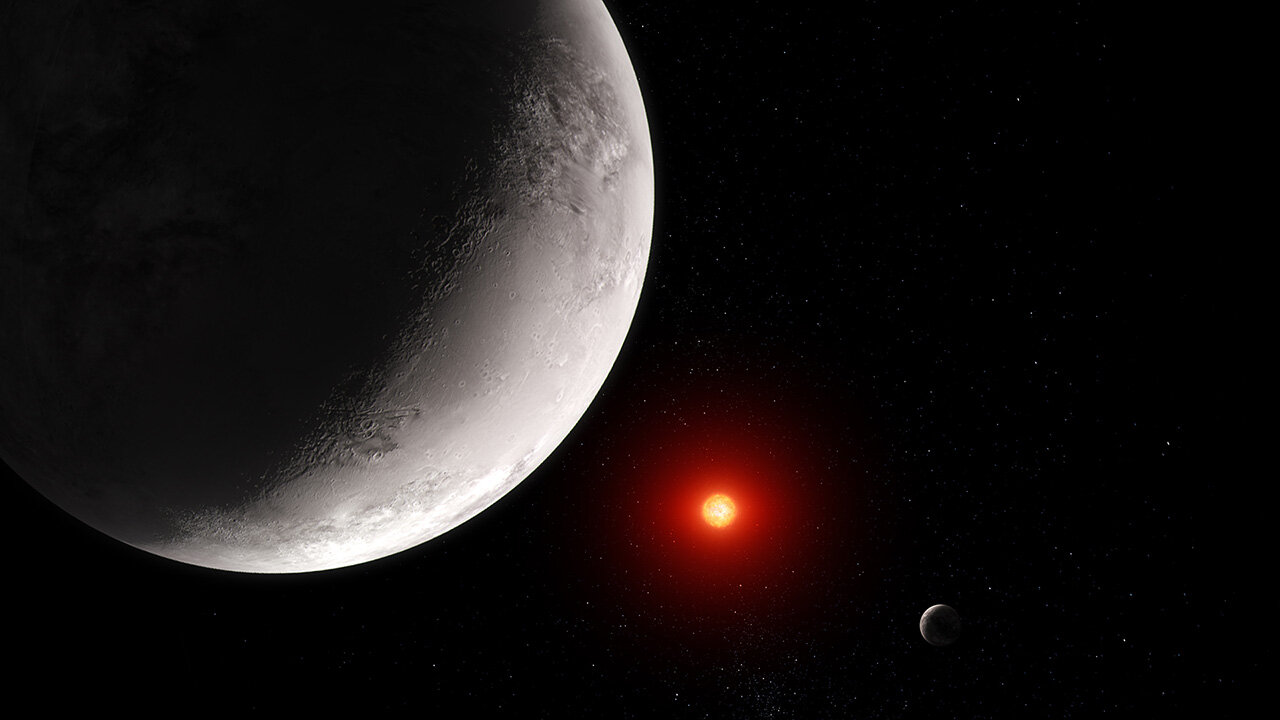The James Webb Space Telescope (JWST) conducted a series of infrared measurements of the exoplanet TRAPPIST-1c. They revealed that this world is not as similar to Venus as previously believed.
The TRAPPIST-1 System
TRAPPIST-1 is one of the most well-known star systems in modern astronomy. It consists of a red dwarf star orbited by seven rocky exoplanets. At least three of them are located within the habitable zone, meaning they receive enough warmth from their star to potentially support liquid water on their surfaces given the right atmospheric conditions.

All of this makes the TRAPPIST-1 system an incredibly attractive target for research. It comes as no surprise that it became one of the primary objectives for the JWST. The telescope has already observed the innermost exoplanet, TRAPPIST-1b, revealing that it lacks a significant atmosphere and has a surface temperature of 230°C.
The second exoplanet in line for observation was TRAPPIST-1c, which is 30% more massive and 10% larger in radius compared to our own planet. Its orbit takes it approximately 2.4 million kilometers away from the red dwarf.
Until recently, many astronomers compared TRAPPIST-1c to Venus. Both receive a similar amount of light from their respective stars. It was believed that the exoplanet had a dense atmosphere, creating a powerful greenhouse effect.
An Atmosphereless Exoplanet
To test this assumption, an international team of researchers employed the JWST and a method known as secondary eclipse photometry. The essence of this method involved measuring the system’s brightness variations as TRAPPIST-1c passed behind its star. Thanks to the high sensitivity of its instruments, which far surpasses that of its predecessors, the space observatory was able to calculate the amount of infrared light emitted by the day side of TRAPPIST-1c. Further analysis revealed that this value corresponds to an average surface temperature of 107 ± 31°C.
The obtained result indicates that TRAPPIST-1c is not a Venus analog and is unlikely to possess a significant atmosphere. Otherwise, its surface would be heated to much higher temperatures. According to the researchers, the JWST data best align with a model in which TRAPPIST-1c is either a bare rock or has an extremely thin gas envelope. The absence of a thick atmosphere suggests that the exoplanet formed with a relatively small amount of water.
In the future, astronomers plan to continue observing TRAPPIST-1b and TRAPPIST-1c to search for signs of heat redistribution between their day and night sides, which could indicate the presence of any kind of atmosphere. Additionally, they are interested in studying other worlds within the system, especially those orbiting within the habitable zone.
Source: phys.org
Начало формы
